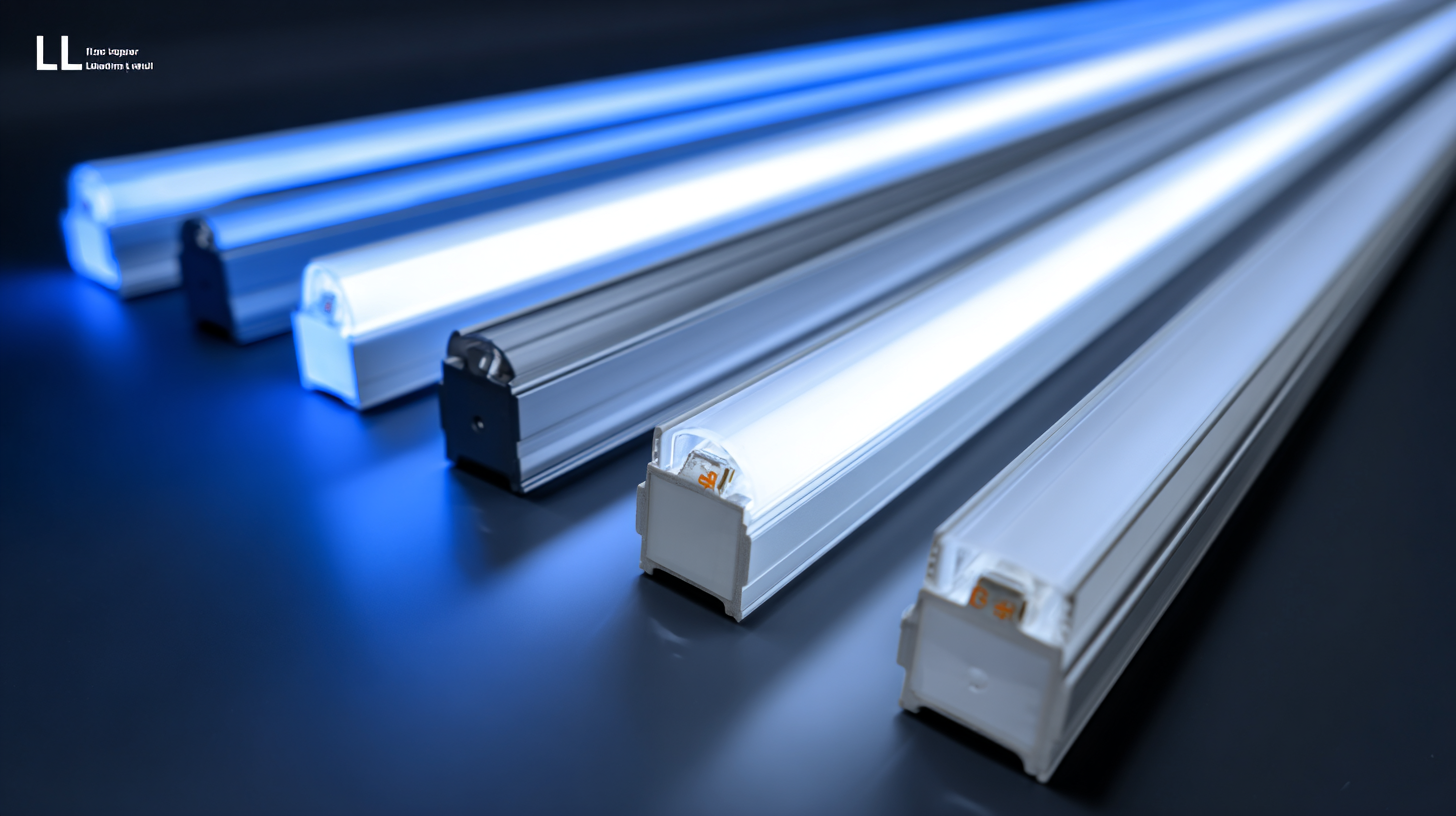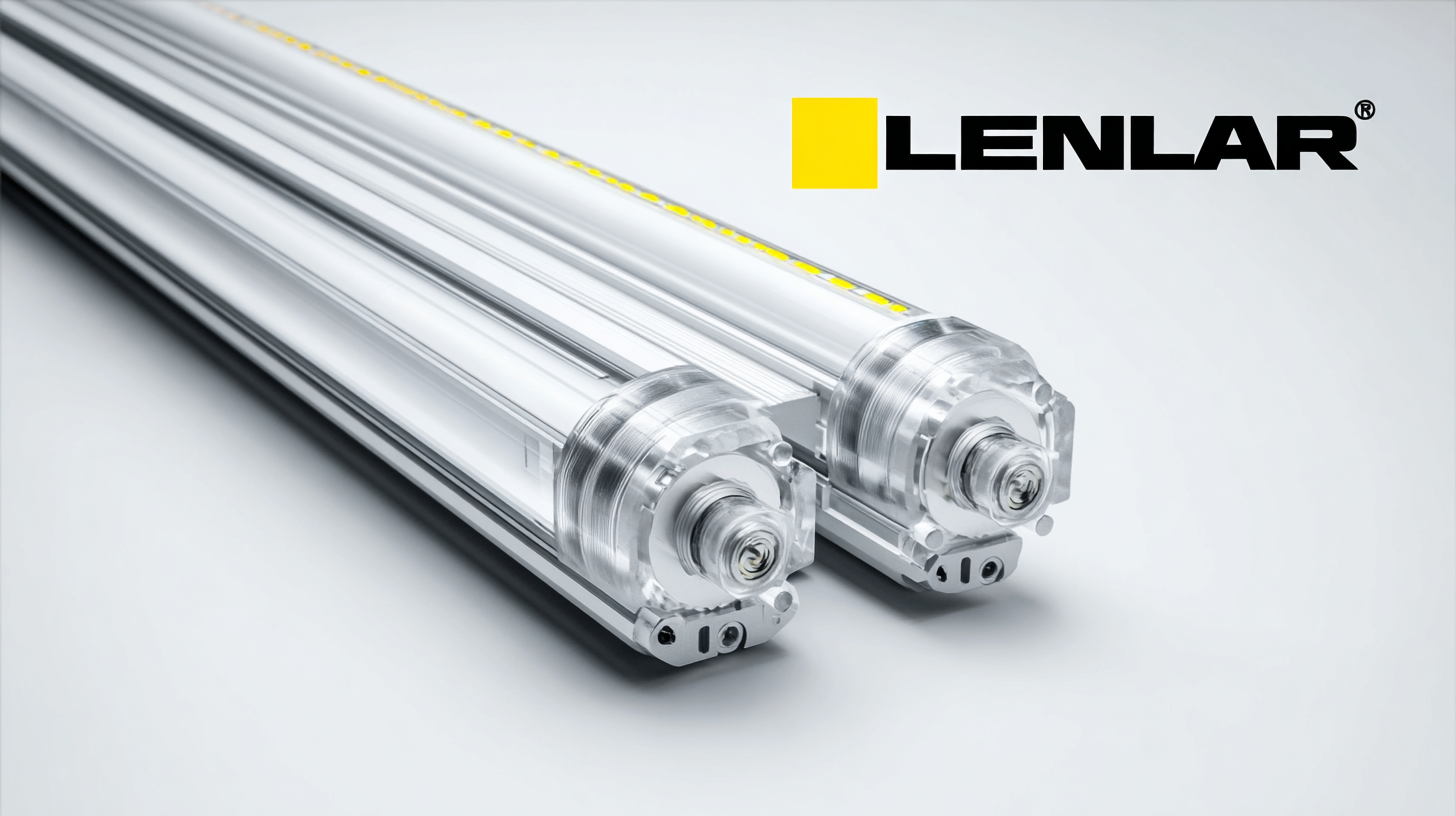2025 Industry Trends: Innovative Solutions for Best LED Linear Lighting Procurement
As we look ahead to 2025, the landscape of LED linear lighting procurement is set to undergo significant transformation, driven by innovative solutions and advancements in technology. According to a report by Grand View Research, the global LED lighting market is expected to reach $105.9 billion by 2025, with a CAGR of 13.5%. This growth is primarily attributed to the increasing demand for energy-efficient lighting solutions and the rising awareness of environmental sustainability. Companies are actively seeking to optimize their procurement processes to not only reduce costs but also enhance product quality and supplier relationships. The trend towards smart lighting systems and IoT integration is further reshaping industry practices, making it crucial for stakeholders to stay informed about the latest innovations in LED linear lighting. Emphasizing excellence in manufacturing while leveraging China's robust production capabilities can provide a strategic advantage in servicing global markets effectively.

Identifying Key Qualities of Top LED Linear Lighting Manufacturers
When procuring LED linear lighting, understanding the key qualities of top manufacturers is crucial for ensuring both effectiveness and sustainability. One of the foremost attributes to consider is innovation. Leading manufacturers consistently invest in research and development to incorporate the latest technologies and energy-efficient solutions. This not only enhances the performance of their products but also aligns with the growing demand for environmentally friendly options in the lighting industry.

Another critical quality is reliability. The best LED linear lighting producers stand out for their commitment to high-quality materials and rigorous testing processes, ensuring that their products are durable and long-lasting. Clients should look for manufacturers that offer comprehensive warranties and robust customer support. Finally, flexibility in design and application is essential. Top manufacturers provide a variety of customizable options to meet diverse project needs, allowing for seamless integration into different environments and enhancing the overall aesthetic appeal. By focusing on these key qualities, buyers can make informed decisions that lead to successful procurement outcomes.
Evaluating Digital Tools for Efficient LED Procurement
The procurement of LED linear lighting is increasingly leaning towards digital solutions as organizations strive for efficiency and cost-effectiveness. According to a report by the International Energy Agency (IEA), the global LED market is projected to reach a staggering $60 billion by 2025, driven by the growing emphasis on energy efficiency and sustainability. To navigate this evolving landscape, leveraging digital tools is vital for procurement teams to streamline processes and reduce operational costs.
Advanced procurement software is now available, offering features such as real-time tracking, supplier performance analytics, and automated purchasing processes. A study by McKinsey & Company revealed that companies that implemented digital procurement tools saw a reduction in procurement costs by as much as 20% while also improving supplier relationships and risk management. Additionally, platforms that utilize AI and machine learning can enhance decision-making capabilities, helping teams select suppliers that align with their strategic goals. Embracing these digital solutions is essential for organizations aiming to stay ahead in the competitive LED industry while ensuring they achieve the best value for their investments.
Comparative Analysis: Best LED Linear Lighting Solutions in 2025
As the demand for energy-efficient lighting continues to soar, 2025 is set to be a pivotal year for LED linear lighting solutions. This comparative analysis focuses on the most innovative options available, highlighting their unique features and advantages. Leading manufacturers have prioritized sustainability and performance, offering products with enhanced lumens per watt, longer lifespans, and superior thermal management. These advancements not only reduce energy consumption but also lower maintenance costs, making LED linear lighting an attractive investment for both commercial and residential applications.

Furthermore, the surge of smart technology integration into LED linear systems cannot be overlooked. Many of the best solutions now come equipped with IoT capabilities, allowing for remote monitoring and control, customizable lighting settings, and energy usage analytics. Brands that embrace these technologies are setting themselves apart, providing users with both convenience and further cost savings. With a diverse range of options featuring various installation styles and designs, procurement teams in 2025 will have a wealth of information to guide them in selecting the ideal LED linear lighting solutions that align with their specific needs and sustainability goals.
Sustainable Practices in LED Manufacturing: What to Look For
In the rapidly evolving landscape of LED manufacturing, sustainability has become a key consideration for buyers seeking innovative solutions. As we approach 2025, it’s essential to understand the sustainable practices that underpin quality LED linear lighting procurement. Manufacturers are increasingly focusing on eco-friendly materials and processes, aiming to minimize environmental impact throughout the product lifecycle. This commitment ranges from sourcing recyclable components to implementing energy-efficient production techniques, ensuring that products not only perform well but also contribute positively to the planet.
When selecting LED linear lighting solutions, procurement professionals should prioritize manufacturers who adhere to recognized sustainability certifications, such as Energy Star or RoHS compliance. These certifications provide reassurance that the products meet stringent environmental standards. Additionally, transparency in supply chain practices is crucial; buyers should look for companies that disclose their sourcing practices and carbon footprint commitments. By embracing these sustainable principles, companies can enhance their brand reputation, drive resource efficiency, and foster innovation in the lighting industry, paving the way for a more sustainable future.
Navigating Industry Trends: Adapting to Changing LED Market Demands
As the LED lighting industry continues to evolve, adapting to market demands becomes increasingly critical. The trends of 2025 emphasize sustainability, efficiency, and technological integration. Companies seeking to procure LED linear lighting solutions must remain attuned to these shifts to stay competitive. For instance, understanding the importance of energy efficiency not only enhances environmental responsibility but also significantly reduces operational costs.
Tip: When evaluating LED suppliers, prioritize those who offer comprehensive sustainability practices. Look for certifications and transparency in sourcing materials, as this can indicate a supplier’s commitment to environmentally friendly processes.
Additionally, incorporating smart technology into LED linear lighting systems is becoming essential. Features such as IoT connectivity, dimming capabilities, and remote management are increasingly sought after, allowing facilities to optimize energy usage seamlessly. This trend suggests that rudimentary lighting solutions are becoming outdated.
Tip: Consider investing in adaptable lighting solutions that can evolve with your business needs. Multifunctional products that integrate easily with smart systems will offer long-term flexibility and efficiency, ensuring you can meet changing market demands without significant reinvestment.
